easily disturbed. Kids will make their nightmares up out of anything,
and the important thing in fiction, if you’re giving them nightmares, is
to demonstrate that nightmares are beatable”.
Obviously I don’t think that everyone should do this as a career choice, nor would I expect everyone to be able to tackle children’s stories well. Not everyone is suited for everything, but, everyone can benefit from trying something that throws them out of their comfort zone, and stories for young readers is a powerful way to get there. On the surface kid’s stories should be the easiest to do, right? I mean kids like simple silly things and it’s about dumbing down and making a narrative version of a goo-goo face, isn’t it?
No. The moment a kid grows out of one word per page board books, they are ready and expect a lot more than the usual presumptions. Kids are smarter than you think and in many respects smarter as a baseline than the smartest person you know. They can spot a fraud a miles away and still be fooled by the coin-in-the-ear magic trick. They are insane madhouse creatures with the playbook on how to rule the world. And they can teach us everything. If you’re short on time I encourage you to ignore the article below and instead just print this below and be done with it knowing you have a good and solid start right here:
For those of you still with us, here’s more:
KIDS ARE SMARTER THAN YOU ARE
No they can’t drive a car or maybe do your taxes or understand how to get around a wifi security firewall, but they can spot a fraud before it’s even gotten out of bed. Kids know what is true even if they haven’t yet learned what is fact. The moment you start dumbing down your story, because it’s for kids, you have lost them. They may not yet know what they want, but they know what they don’t want moments after encountering it. They know when they’re being lied to and they know when you’re talking down to the, especially in a story. They can be the world’s tiniest narcissists, and from that singular perspective have no time for you making choices at their expense for reasons of your own making. They are living IDs with agency and respecting that, learning to be true and direct can only aid in your task of learning to tell stories to grown people who have complicated their road to understanding. Kid’s lit can teach you how to be honest with your audience and direct with how you speak to them in ways you can’t guess at. The best anecdotal proof of this is how I remember seeing kids react when sitting in the theater during the first Star Wars film, not intentionally made for children, and the Phantom Menace that was quoted by Lucas as being made explicitly for kids: the former had them rapt in silence and on board with every passing frame. The latter saw an audience of bored children ten minutes after it started and a lot of chatter about other things. You lose your audience in kid’s lit, they are gone from you. There’s a lot of them to digest and they will not spend time on anything that doesn’t speak truth to them. Where the Wild Things are, Harry Potter, Wimpy Kid, Captain Underpants, all sell well and consistently because they speak true to their readers. You can throw a jump scare at them only so often before it stops working. Being part of a special gestalt might get you a first read, but the rabid rereading you see with these books is because they are honest and respectful of their intended audience and never talk down or lie to them.
KID’S LIT TEACHES THE FREEDOM OF LIMITS
 Yes, kid’s stories have some strictures on them. You can’t be overtly graphically violent, or on the nose about adult themes, or use explicit language or invoke sexual content as cymbal clashing moments in your story. I would suggest if you are leaning on those to make your story powerful and important, than it is neither. If a story can’t be stripped of it’s adult vices and survive as a story with the same level of impact, then your story stinks. The limits that kid’s lit insists upon means you have to be smarter about how you make and tell your stories. You’re not just singing a song for a ready-made audience, you need to earn their attention and trust with value. Learning how to write and tell a story without the adult license to write anything at all teaches you to write smarter, better and more thoughtful than any grown up tale could ever teach. If you can tell a scary story that a kid can read and be scared by, and then want to read again, you can tell any story you want. But if you can’t do that, you probably can’t. The limits inherent to children’s narratives can strengthen your chops in ways unmatched by any other medium in narrative fiction. The freedoms of adult lit do not and teach us about many things, but cannot teach us this. Fences are freedom, not confinement, but only if you can figure a way around and out from the fence. Children’s stories teach you where and how to dig the holes, how to spring the locks, and how to jimmy the hinges on the cell doors. They force you to tell a story without the crutches adult lit can lean to heavily upon.
Yes, kid’s stories have some strictures on them. You can’t be overtly graphically violent, or on the nose about adult themes, or use explicit language or invoke sexual content as cymbal clashing moments in your story. I would suggest if you are leaning on those to make your story powerful and important, than it is neither. If a story can’t be stripped of it’s adult vices and survive as a story with the same level of impact, then your story stinks. The limits that kid’s lit insists upon means you have to be smarter about how you make and tell your stories. You’re not just singing a song for a ready-made audience, you need to earn their attention and trust with value. Learning how to write and tell a story without the adult license to write anything at all teaches you to write smarter, better and more thoughtful than any grown up tale could ever teach. If you can tell a scary story that a kid can read and be scared by, and then want to read again, you can tell any story you want. But if you can’t do that, you probably can’t. The limits inherent to children’s narratives can strengthen your chops in ways unmatched by any other medium in narrative fiction. The freedoms of adult lit do not and teach us about many things, but cannot teach us this. Fences are freedom, not confinement, but only if you can figure a way around and out from the fence. Children’s stories teach you where and how to dig the holes, how to spring the locks, and how to jimmy the hinges on the cell doors. They force you to tell a story without the crutches adult lit can lean to heavily upon.
CHILDREN’S STORIES TEACH US THE POWER OF EMPATHY
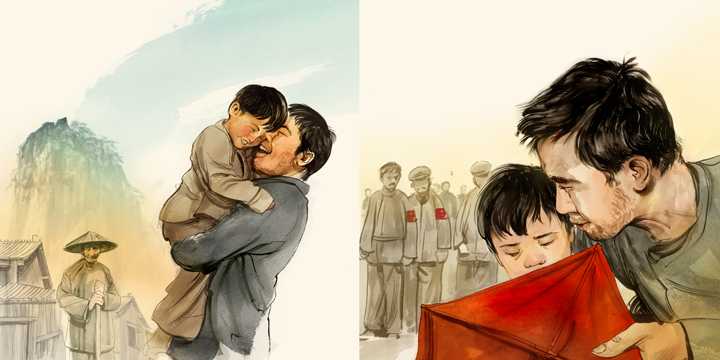 Not the socially good kind, though that is of course essential. I mean the ability to think about how the reader will read what you’re writing. Most of the time when I’m writing a story, breaking it down or even crafting dialogue and whole scenes in a narrative, I am focused on how to voice the events or ideas of that story in the best way possible. When I write kid’s lit, I also think about how it would be like to read it as a kid. When I read good kid’s lit, I am reading empathy at its absolute finest moment. It’s to easy to forget to empathize with your reader when you’re writing. When you are on the roller-coaster and it’s flowing, you are to busy heeding it’s forward momentum.
Not the socially good kind, though that is of course essential. I mean the ability to think about how the reader will read what you’re writing. Most of the time when I’m writing a story, breaking it down or even crafting dialogue and whole scenes in a narrative, I am focused on how to voice the events or ideas of that story in the best way possible. When I write kid’s lit, I also think about how it would be like to read it as a kid. When I read good kid’s lit, I am reading empathy at its absolute finest moment. It’s to easy to forget to empathize with your reader when you’re writing. When you are on the roller-coaster and it’s flowing, you are to busy heeding it’s forward momentum.
KID’S LIT TEACHES US THE POWER OF SIMPLICITY
 Simplicity is what makes poetry hard, it’s what makes comics so challenging and short stories the hardest to write. Simple is so much harder than complex. With complexity and time you have more than enough space to flesh out your idea in broad long winded ways that allow for wasted words, and tangents and an obsession with detail or setting or light. Kids do not have time for that business. No sir. They are all in many ways tiny narrative Veruca Salts and they want their story and they want it now. You cannot string them along and cannot make them chase red herrings with no result. Saying in two words what you might usually use a paragraph to elucidate is damned hard to do, but the exercise in getting there can be invaluable. Mo Willems is at his best when he writes the least, and when he does this he is unmatched in his line directly to a kid’s soul in his books. They simply get him because he gets them. The common mistake made in reading someone like Faulkner or McCarthy is their flourish with language and their complex sometimes pages-long paragraphs, and assuming that their merit lies there. In truth each sentence in any of those miles-long paragraphs contains whole worlds within them. Their points are simple, their directives basic, and from that flowers out and from that singular base, complexity and flourish. The best way to learn to tell a complex narrative is to start by telling one simply. The hardest audience to succeed at this with is young readers. If you can stick a landing with them, you can dance as long as you like elsewhere and each step that might otherwise act as filler, will mean everything.
Simplicity is what makes poetry hard, it’s what makes comics so challenging and short stories the hardest to write. Simple is so much harder than complex. With complexity and time you have more than enough space to flesh out your idea in broad long winded ways that allow for wasted words, and tangents and an obsession with detail or setting or light. Kids do not have time for that business. No sir. They are all in many ways tiny narrative Veruca Salts and they want their story and they want it now. You cannot string them along and cannot make them chase red herrings with no result. Saying in two words what you might usually use a paragraph to elucidate is damned hard to do, but the exercise in getting there can be invaluable. Mo Willems is at his best when he writes the least, and when he does this he is unmatched in his line directly to a kid’s soul in his books. They simply get him because he gets them. The common mistake made in reading someone like Faulkner or McCarthy is their flourish with language and their complex sometimes pages-long paragraphs, and assuming that their merit lies there. In truth each sentence in any of those miles-long paragraphs contains whole worlds within them. Their points are simple, their directives basic, and from that flowers out and from that singular base, complexity and flourish. The best way to learn to tell a complex narrative is to start by telling one simply. The hardest audience to succeed at this with is young readers. If you can stick a landing with them, you can dance as long as you like elsewhere and each step that might otherwise act as filler, will mean everything.
CHILDREN REMIND US TO BE FUNNY
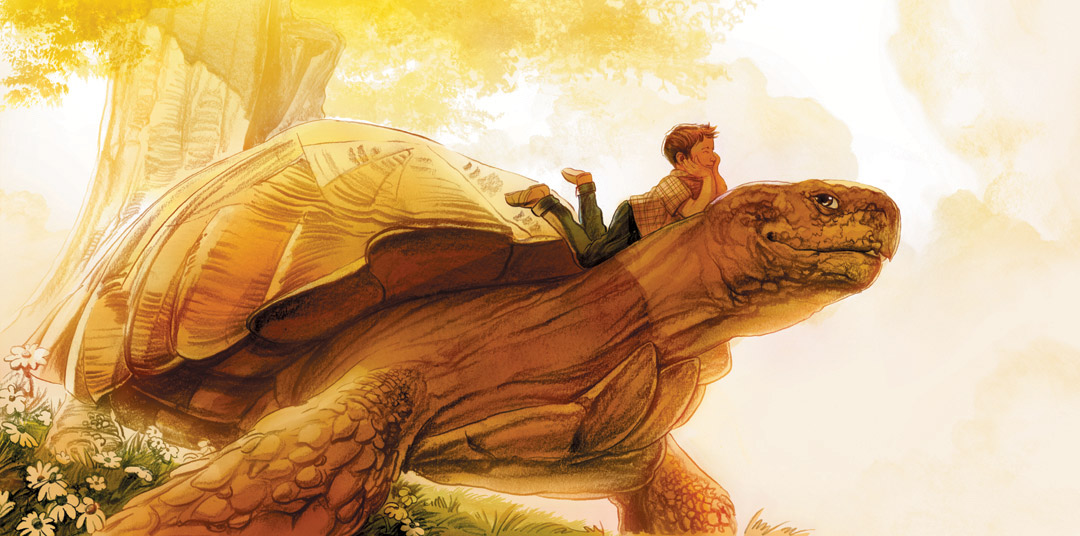 Over and over again I find that even in the scariest of stories, the most struggling of human dramas, are all for naught without remembering that in key moments, humor brings it all home. David Lynch is scariest when remembers to be funny. Roald Dahl delights in humor/horror in ways we are still trying to understand. Even Aesop’s fables possess an element of silliness when they are teaching us the most profound truths. Whether it’s Don Juan Matus, Rocket Raccoon, Yoda, Gollum or Gandalf, a silly wink or a trick of the hand at a moment of crisis is how we adopt a truth in ways deeper and more profound than by any other means available to us. Kids love to laugh and want to as often as possible. Through humor we have a direct line to truth and to the hearts of our readers. We want to be happy and the fleetingness of that emotion is what makes it so valuable. In structuring your narrative, remembering to show moments of levity or clumsiness is what makes your characters real to your audience. Pixar manages to get us to emotionally invest in a faceless robot that can’t speak and bumps into everything in Wall-E in ways even six episodes of the brilliantly written Sopranos could not accomplish. The first eight minutes of UP before the credits even roll are the most effective and efficient images in the history of film because of the clunks and failings and humor within it. The sadness and loss we feel is not an accident, it is the reward for all the joy we have just seen. If you ever want to learn and see in proof how powerful children’s lit can teach you, watch that sequence. Remember that a thing taken away only matters if the thing being stolen is valuable.
Over and over again I find that even in the scariest of stories, the most struggling of human dramas, are all for naught without remembering that in key moments, humor brings it all home. David Lynch is scariest when remembers to be funny. Roald Dahl delights in humor/horror in ways we are still trying to understand. Even Aesop’s fables possess an element of silliness when they are teaching us the most profound truths. Whether it’s Don Juan Matus, Rocket Raccoon, Yoda, Gollum or Gandalf, a silly wink or a trick of the hand at a moment of crisis is how we adopt a truth in ways deeper and more profound than by any other means available to us. Kids love to laugh and want to as often as possible. Through humor we have a direct line to truth and to the hearts of our readers. We want to be happy and the fleetingness of that emotion is what makes it so valuable. In structuring your narrative, remembering to show moments of levity or clumsiness is what makes your characters real to your audience. Pixar manages to get us to emotionally invest in a faceless robot that can’t speak and bumps into everything in Wall-E in ways even six episodes of the brilliantly written Sopranos could not accomplish. The first eight minutes of UP before the credits even roll are the most effective and efficient images in the history of film because of the clunks and failings and humor within it. The sadness and loss we feel is not an accident, it is the reward for all the joy we have just seen. If you ever want to learn and see in proof how powerful children’s lit can teach you, watch that sequence. Remember that a thing taken away only matters if the thing being stolen is valuable.
KIDS MAKE US REMEMBER HOW IMPORTANT SCREWING UP IS
While children are harsh critics when lied to, they are also deeply forgiving readers if you show mistakes as part of your character’s life. The reason that Superman is largely boring as a character to most is his lack of fallibility. He’s simply too super to be a man. The reason Greg Hefley speaks to his reader’s hearts is because he is constantly screwing up, learning to do better and then screwing up again. Kids can forgive this Wimpy Kid character because they trust him as real and true thanks to Jeff’s smart writing. No matter how much Greg blows it, his readers love him for it. If you don’t screw up the trust part, a kid will follow you into the darkest woods because he or she trusts you, no matter how lost you get, to find your way out and back into the sunlight. When we grow up this remains. For all the stories we follow and love, that basic element remains however hidden, within the story.
The fundamental principles of storytelling also exist in every good piece of children’s stories. If you can’t tell a story well to kids, you’re not going to be able to do it for grown ups. Even if you never ever seek to publish or sell a children’s story, forcing yourself to write one and do so successfully can be an invaluable exercise. Children’s picture books are the only literary medium meant to be read aloud by design. So in writing one, as Jon Muth encouraged me to do once, read it out loud and heard your words, feel and notice their sound and pitch and how it reads aloud. This exercise at the very least makes you aware of your words, and that alone is an essential lesson right there. Children’s lit teaches us that each word matters. They teach us to be efficient. They teach us to be patient, to respect our audience and to honor their trust. Kid’s lit teaches us how to fly the hard way so it looks easy without the restrictions. Kid’s lit teaches us to remember to laugh and to love and to give our characters those qualities. Kid’s lit teaches us what it is to be people before we forget what people really are while we grown up. Reading, creating and studying children’s literature isn’t about escaping into simplistic worlds and infantilizing your ethic as a writer or a visual storyteller, it’s about rediscovering the lessons you knew long ago but have now forgotten.


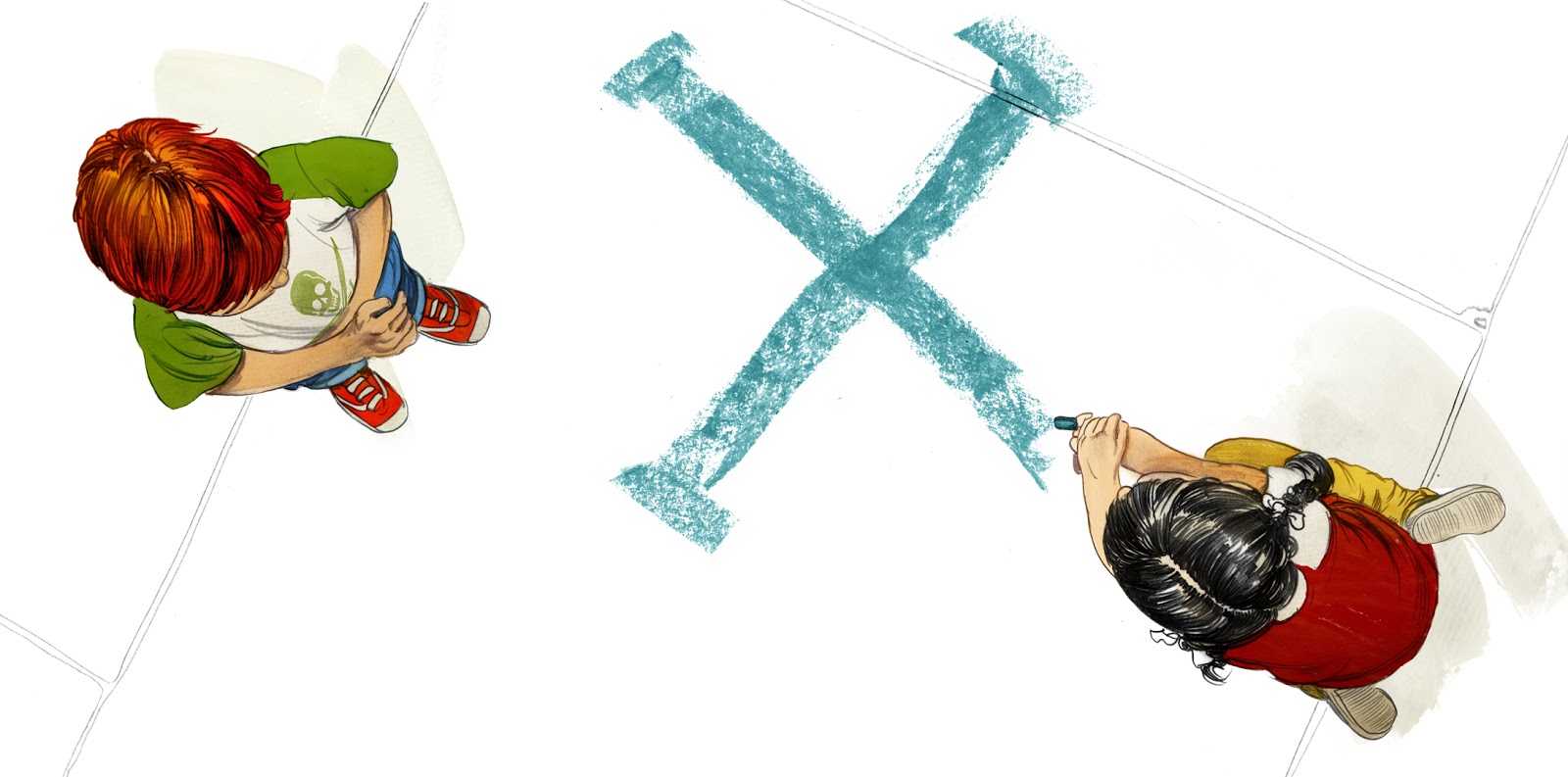



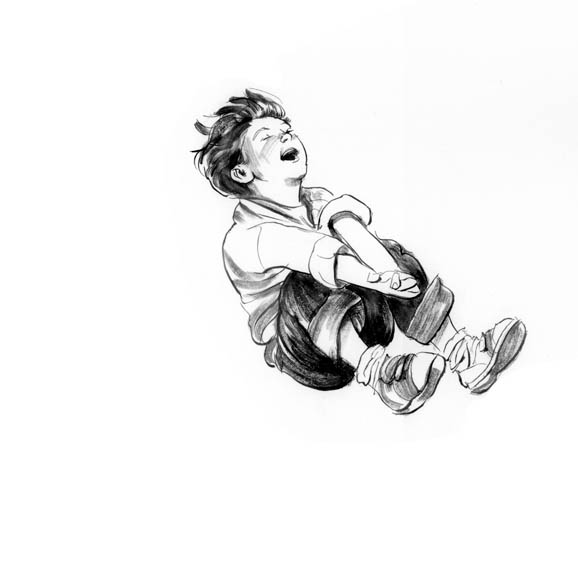

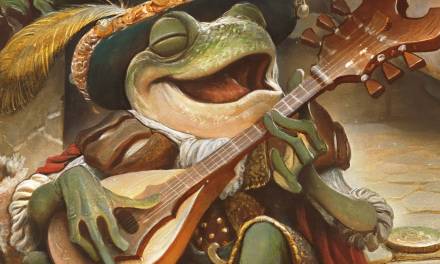

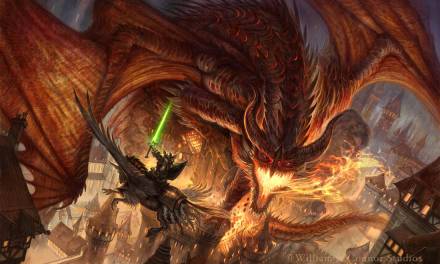
Wonderful post Greg.It is great to read your reflections on narrative in general and more so in this particular case.The fundamental true you mention: Be honest, be human, be respectful to your audience is of significant value when the pre-concived notion regarding kid's literature(and almost everything geared towards them) is about contempt, scorn and just plain underestimation.
Just wanted to show my appreciation,thanks for a good reading.
Thanks- it really is a medium that teaches so much you need as a narrative artist, or to come down from the knee-jerk sensationalism and violence a lot of creatives use as stand ins for delivering the point. Glad to hear the article rang a bell.
Greg I thoroughly enjoyed reading your article. I couldn't agree more with sentiments you expressed. The best stories for children, the ones that resonate with them and echo on for decades in their hearts and minds, contain at least a pinch of darkness and fear. It reflects the truth. The world is an often scary place when you're a kid. Acknowledging that fear and the bravery it takes to face it is the secret to success.
Right. exactly. Kids go through all the stuff we do, just on a different scale and with different stakes… but they do so more purely and more directly.
Thanks for this! I always enjoy reading your posts, and deciphering them – TOO! 😉
I love the title: 'Why All Storytellers Should Tell Children's Stories'
A wonderfully inspiring post.
Thank you.
May I introduce to you my own humble attempt: From Ireland – Original Stories for Children
With my compliments,
Richard
good